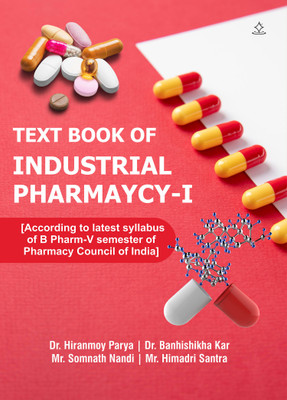TEXT BOOK OF INDUSTRIAL PHARMAYCY-I - According to latest syllabus of B. Pharm-V semester of Pharmacy Council of India(Paperback, Dr. Hiranmoy Parya, Dr. Banhishikha Kar, Mr. Somnath Nandi, Mr. Himadri Santra)
Quick Overview
Product Price Comparison
Textbook of Industrial PharmacyŌĆōI is a comprehensive academic resource designed to provide in-depth knowledge of the principles, formulation, manufacturing, and evaluation of various pharmaceutical dosage forms. The book begins with preformulation studies, highlighting the importance of understanding the physicochemical and chemical properties of drug substances, along with BCS classification and its applications in the development of solid, liquid, and parenteral dosage forms. It then provides detailed coverage of tablets, including their classification, formulation, excipients, granulation methods, compression issues, tooling, coating techniques, and quality control testing. The section on liquid orals explains formulation and manufacturing considerations for syrups, elixirs, suspensions, and emulsions, alongside packaging, filling, and evaluation methods. The book also focuses on capsules, describing the production and filling of hard and soft gelatin capsules, their unique formulation challenges, defects, quality control, stability testing, and applications. A dedicated section on pellets explains formulation requirements, pelletization processes, and equipment used in their manufacture. The book further explores parenteral products, covering their types, advantages, limitations, vehicles, additives, isotonicity, aseptic processing, formulation of injections, sterile powders, large volume parenterals, lyophilized products, and quality control measures. It also emphasizes ophthalmic preparations, discussing formulation and preparation of eye drops, ointments, and lotions, along with labeling, containers, and evaluation. A special section on cosmetics provides insights into the formulation and preparation of lipsticks, shampoos, creams, toothpastes, hair dyes, and sunscreens. The text explains pharmaceutical aerosols, including propellants, containers, valves, formulation methods, manufacturing, evaluation, stability, and quality control. Finally, the book concludes with packaging material science, focusing on types of materials, selection factors, legal and official requirements, stability considerations, and quality control testing.

